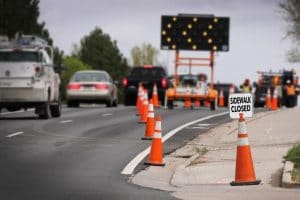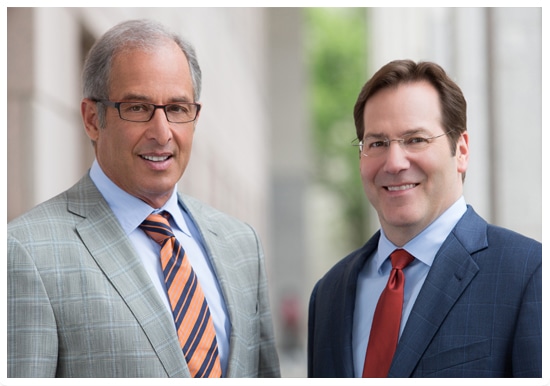Walking in Charlotte Can Be Hazardous to Your Health
 Imagine being a pedestrian trying to cross South Tryon Street, Tyvola Road, or anywhere in uptown. Drivers are more focused on trying to get to their destination than who might be trying to dodge them to get across the road. The combined congestion and speed on Charlotte’s roadways make it incredibly difficult to safely get from one side of the road to the other on foot without becoming a pedestrian accident statistic. Developers need to take safety into account when they’re planning for traffic in a metropolitan area where many people rely on walking either for convenience or financial considerations.
Imagine being a pedestrian trying to cross South Tryon Street, Tyvola Road, or anywhere in uptown. Drivers are more focused on trying to get to their destination than who might be trying to dodge them to get across the road. The combined congestion and speed on Charlotte’s roadways make it incredibly difficult to safely get from one side of the road to the other on foot without becoming a pedestrian accident statistic. Developers need to take safety into account when they’re planning for traffic in a metropolitan area where many people rely on walking either for convenience or financial considerations.
In 2017, at least 5,977 pedestrians were killed nationwide according to the National Highway Traffic Safety Administration (NHTSA) and 27 of those deaths were in one city – Charlotte. In 2018, that record fell to the wayside when 28 pedestrian deaths occurred.
Risk factors for pedestrians are not in short supply
A large portion of uptown Charlotte has the benefit of the Overstreet Mall. This maze of walkways and invisible paths safely connects numerous buildings and parking structures, mostly without having to be outdoors. Even in the parking structure that connects part of the circuit, a designated pathway allows pedestrians to remain safe from vehicles. Unfortunately, this safety feature doesn’t connect all of Charlotte and there are still dangers afoot.
Sidewalk construction
Sidewalks hold their own risks because they’re not always wide enough or far enough away from traffic to do their job. Creating proper sidewalks means setting them back further, which requires more land at greater expense. Someone who stumbles over an uneven section of the walkway or loses balance for any reason may fall into the roadway and be hit.
There are also many businesses lining busy roads without sidewalks. In 2012, an altercation spilled outside a Dilworth bar with only a narrow shoulder between Park Road traffic and the tavern’s parking spaces. One shove ended a man’s life when he wound up in the street and was struck by a car.
Crosswalk problems
Crosswalks are not spaced in a manner that makes them overly useful to those who need them. They’re far apart, which makes it more difficult to walk to your destination in a more direct path, so pedestrians take chances crossing traffic in more convenient locations. Crosswalks also tend to be constructed in more affluent areas of town while lower income areas see fewer of them.
Then there’s the issue of maintaining the areas where crosswalks are placed. An 85-year-old woman and her dog were hit and killed crossing Moores Chapel Road last year. A crosswalk about 12 yards from where the accident occurred wasn’t connected to the sidewalk due to overgrowth and mud, also making it a slipping hazard.
Unsafe infrastructure for walking is another crosswalk concern. Wide lanes allow for making turns at higher rates of speed, leaving less time to see a pedestrian.
Distracted driving and walking
Busy and long morning and evening commutes also means many drivers are looking for ways to better utilize that time. Whether it’s talking or texting on a cell phone conducting business, mentally planning a vacation, or scrolling through social media catching up with friends or family, your focus being elsewhere is a recipe for wrongful death.
The same goes for pedestrians. Talking or texting on a cell phone or otherwise being distracted while crossing the street or walking along or next to a busy roadway can lead to disaster.
Texting while driving is illegal in North Carolina. The electric highway signs stand as a constant reminder of it but that doesn’t stop drivers from doing it. If chronic speeders don’t get pulled over very often, why would drivers feel any more endangered of seeing blue lights in the rearview mirror over texting?
There are numerous other forms of distraction while behind the wheel, including:
- Drunk driving or driving under the influence of drugs
- Eating or drinking
- Grooming, such as applying makeup, combing hair or shaving
- Reading a newspaper, magazine, book, or map
- “Highway hypnosis,” when you perform all the tasks of driving as an automatic reflex, with no memory of performing those tasks
- Smoking or vaping
Pedestrians endure serious injuries
Human beings are no match for two-ton vehicles moving quickly down the road. In most instances, drivers don’t have much time, if any, to even slow down before impact. That’s assuming they see the person in the road and know to react. Even if a pedestrian survives the collision, he or she may be left with severe, possibly permanent damage, such as:
- Broken bones
- Severe bruising and lacerations
- Crushed organs or limbs
- Spinal cord damage
- Traumatic brain injuries
Many of these injuries require surgery, physical therapy, and long recovery periods that may include lengthy stays in the hospital or a rehab facility.
Pedestrian deaths occur due to a perfect storm between accidents, poor city planning, and driver mistakes, most of which are avoidable. If you or a loved one has been injured in a pedestrian-related accident, you have a right to seek recovery for your damages and the pain you have suffered. Recuperating from injuries can be costly, even necessitating permanent at-home nursing care if you cannot fully recover. Speak with a knowledgeable and caring North Carolina personal injury attorney at Warren & Kallianos, PLLC who can guide you through your legal options. To schedule your free consultation in our Charlotte office, call 704-275-5593 or reach out to us through our contact form.

At Warren & Kallianos, we believe in the importance of working directly with our attorneys, Jeff Warren and Chris Kallianos. When you work with our firm, Jeff and Chris are always accessible to you throughout the progress of your case.
Read more about Warren & Kallianos, PLLC
